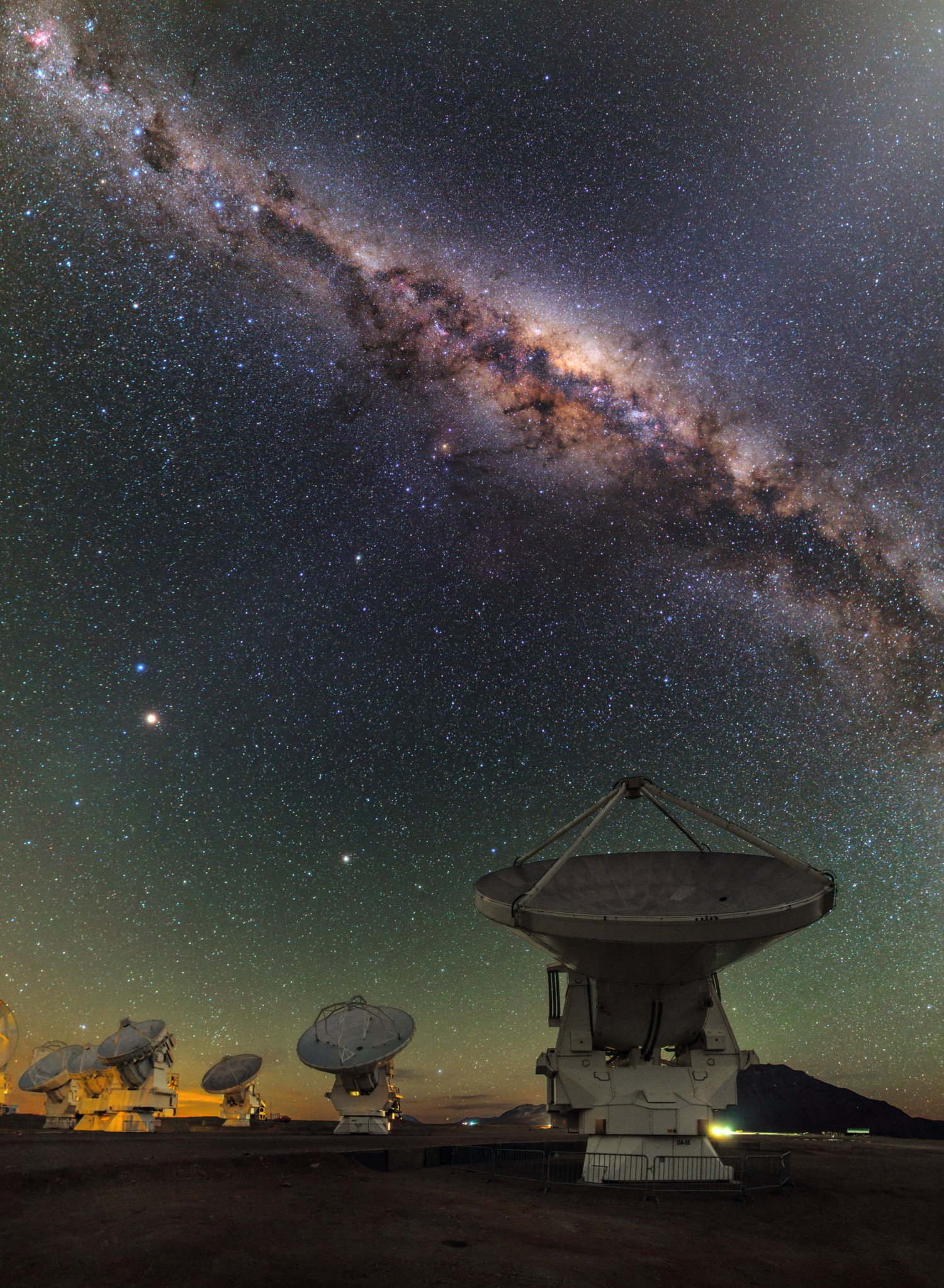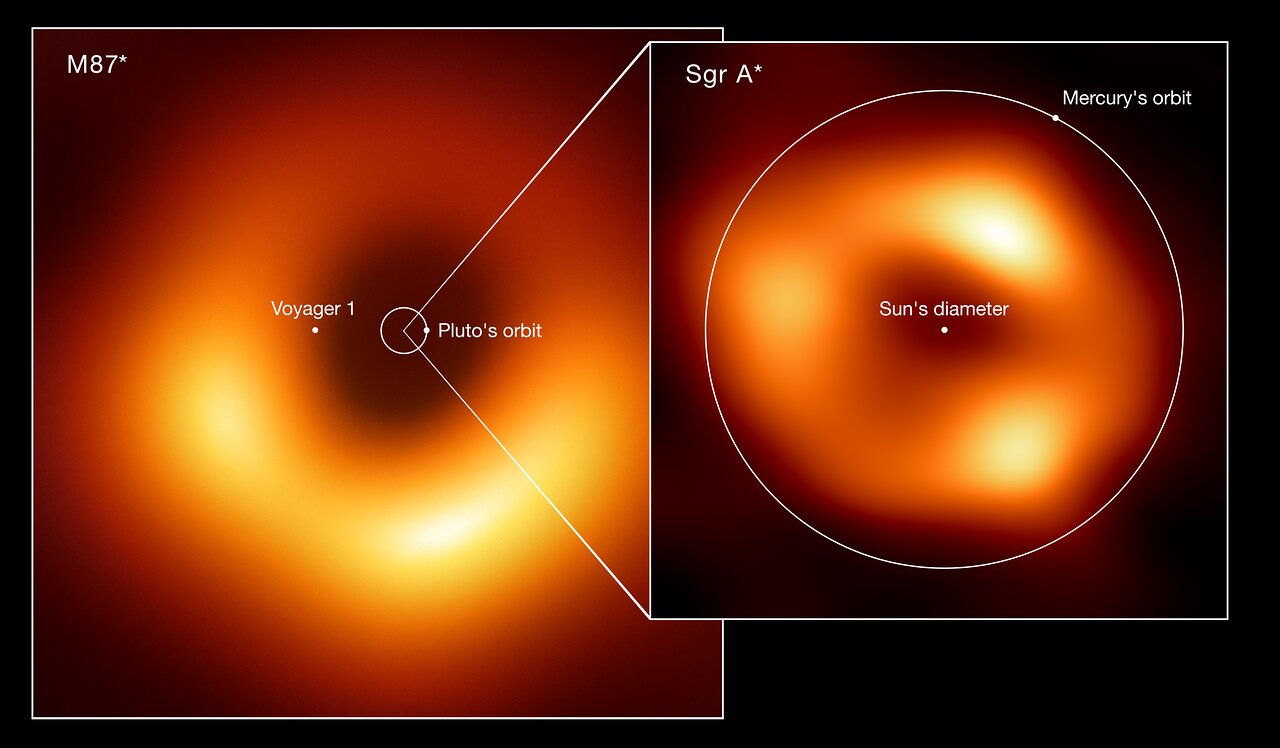Three years ago, astronomers captured the first photo of a black hole. Scientists used a global network of telescopes to capture the supermassive black hole known in a galaxy 55 million light-years away known as Messier 87 or M87. Now, astronomers have captured an image of another black hole, and while it may be smaller, it is much closer — it’s at the center of our own galaxy.
This black hole is known as Sagittarius A*, or Sgr A* for short (pronounced “Sag A-star”). It is at the center of the Milky Way and about 26,000 light-years from Earth. A global research team called the Event Horizon Telescope (EHT) Collaboration produced the image using observations from a worldwide network of radio telescopes.
“We were stunned by how well the size of the ring agreed with predictions from Einstein’s Theory of General Relativity,” EHT Project Scientist Geoffrey Bower from the Institute of Astronomy and Astrophysics, Academia Sinica, Taipei, said in a statement. “These unprecedented observations have greatly improved our understanding of what happens at the very centre of our galaxy, and offer new insights on how these giant black holes interact with their surroundings.”

Scientists had seen stars orbiting something massive yet compact and invisible at the Milky Way’s center, suggesting a black hole. Although black holes cannot be seen because they are completely dark, the glowing gas surrounding the shadowy object provides direct visual evidence that what astronomers viewed was a black hole.
“We are peering into a new environment, the curved spacetime near a supermassive black hole,” Michael Johnson, a researcher at the Harvard-Smithsonian Center for Astrophysics, told CBS News. “And it is teeming with activity, always burbling with turbulent energy and occasionally erupting into bright flares of emission.”
Researchers are excited to have images of two different-sized black holes. These “photos” allow scientists to compare and contrast the object and test theories and models.

“Now we can study the differences between these two supermassive black holes to gain valuable new clues about how this important process works,” EHT scientist Keiichi Asada from the Institute of Astronomy and Astrophysics, Academia Sinica, Taipei, said in a statement. “We have images for two black holes — one at the large end and one at the small end of supermassive black holes in the Universe — so we can go a lot further in testing how gravity behaves in these extreme environments than ever before.”
This story originally appeared on Simplemost. Checkout Simplemost for additional stories.


